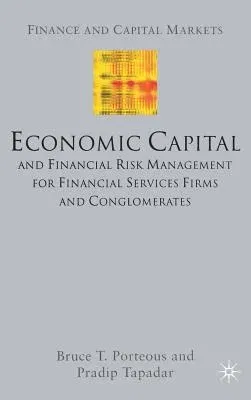The authors present a comprehensive and timely discussion of economic
capital and financial risk management for financial services firms and
conglomerates. Topics covered include: the different types of risks that
firms collect; risk governance issues; how stress testing can be used to
measure risk; the provision of a clear and precise definition of
economic capital; the different types of capital that are eligible to
back regulatory capital, and; the development of models that can be used
to estimate a firm's economic capital requirements. A unique feature of
the book is that, for the first time, the economic capital requirements
of financial services firms across the entire risk spectrum, from the
short end to the long end, are considered in one book. The authors
develop models to estimate the economic capital requirements of banks,
asset management firms, life and non-life insurance firms, pension
funds, and the financial services conglomerates that comprise these
firms. Economic capital is compared to regulatory capital and regulatory
capital arbitrage is discussed. The diversification benefit present in
financial services conglomerates is quantified and the practical
management of this diversification benefit is dealt with. The authors
give new insights into capital management and performance measurement
for financial services conglomerates and provide detailed descriptions
of the main financial services firm regulatory capital changes that are
ongoing at the time of writing. This superb and original book charts new
ground in the practical application of economic capital for financial
services firms and conglomerates. It is required reading for all capital
allocation and risk professionals.

